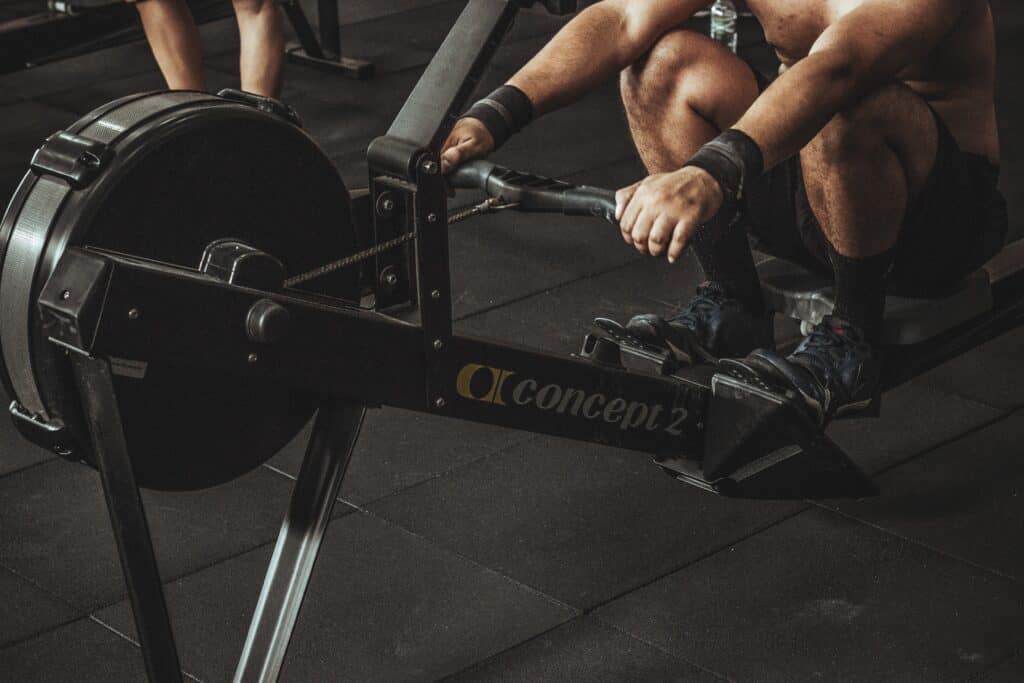When was the last time you tested yourself to determine your overall fitness level? Have you ever even been tested? If you worked with a coach or personal trainer in the past then most likely you’ve been tested. Or let’s just say you should have been.
Periodic quick fitness tests like the following three, can be used as a motivational tool, to help break through plateaus, and to help determine what you’re doing in the gym is actually working. Most importantly though, your exercise program design should be based off your testing results. How can you manage something if you never measure it?
There are many different types of fitness tests available to help gauge where you’re at. Most people spend their time testing their strength using exercise like bench press and squat for maximum repetitions. The following three tests work because they are safe, effective and offer insights into more than one area of your body.
Quick Tests: One-Minute Peak Power Test and 500 Meter Row
The great thing about a rowing machine is its versatility when it comes to testing. This is especially true with a Concept 2 erg or a SkillRow from Technogym. Again, there are many test you can perform. Remember, we want it to be fast and easy to do. The idea behind this test is to provide an objective assessment of your peak power output in a 60-second, all-sprint. The test will also lend insight into your ability to sustain power anaerobically. Do not pace yourself in this test, simply go all out with each stroke.
Other personal favorite quick tests are row for time. More specifically, performing 100 and 500 meter sprints. I believe the world record for the 100 meter row was 12.8 seconds and 500 meter is 1:24 performed by a female and 1:14 by a male. Most people typically do it in about 2-minutes. My personal best 500 meter row time is 1:36.8 to give you a range to shoot for. Hitting 1:30 would be great not to mention a good goal. Rowing is one of the best workouts you can do. Known as a complete workout that involves about 85 percent of your muscle mass. Other than being performed seated, it’s great. Of course the best known event is a 2k meter row in which a 7-8 minute recorded time is considered respectable. Happy rowing!


The Complete Exercise: Turkish Get-Up
All you need for this one is one kettlebell. This is all about strength and mobility. The exercise requires several movements that need to be executed while under load. Try it initially without weight, then use a light weight before progressing to a heavier load if able. It’s an advanced, full-body strength movement. The Turkish Get-Up is performed laying on the ground while holding a weight straight over your head, you stand up, and then you reverse that entire movement until you’re back on the ground where you started. Sounds easy I know but that’s far from the truth. History has it that ancient Turkish soldiers used the get-up as part of their strength training regime.
Coach Bret Contreras has reported using electromyography (EMG) and determined that a 50-pound Turkish Get-Up was enough to cause over 100 percent peak activation of the core muscles (rectus abdominis, internal and external obliques, and the spinal erectors). Sounds impressive enough to me. It’s called a complete exercise because it involves: rolling, a lunge pattern, an overhead hold, multiple hip hinges, glute activation, core engagement, and shoulder work, specifically, rotator cuff stabilization. Coach Todd Cambio offers a great explanation of the exercise sequence. This ain’t a bicep curl.
The test would be to first determine if you can do the movement with good form without weight. One repetition on each side. My advice would be to start using this movement as part of your dynamic warm-up. Then eventually see what you can handle for a load. If you’re a beginner with limited exercise or strength training experience….skip this test for now. Use bodyweight only if you do decide to go for it.
Bodyweight Deep Squat
If you are having trouble with a Squat or Deadlift, try experimenting with this bodyweight deep squat. It’s another one of those great quick tests that offers a great deal of information. Such as, where your ankle mobility stands. Many people who have trouble getting low when doing a barbell squat may have limited ankle mobility, specifically, ankle dorsiflexion. This test can help improve that exercise and many others. Your best option is add this deep squat into your dynamic warm-up like the Turkish Get-Up.
When trying this test, lower into the squat slowly dropping hips back while keeping chest up. When you begin your ascent, think about using three points of contact. As you extend the knees and hips, drive through the feet placing equal pressure on the heel, big toe and pinky toe. Don’t force anything. The goal is to see if you can get the hips lower than the knees.
Periodic self-testing will help in many ways as discussed above. In addition, finding out if positive changes are taking place in other areas of the body is also important. Changes like increases in strength and anaerobic capacity and an improvement in mobility. Improvements in these areas will translate into a better overall experience at the gym.
Stay Strong Together
Jefit, named best strength app by GQ, Esquire, Forbes Health, Men’s Journal and many others, has a community responsible for 92,000,000 workouts to date! The app, which recently passed 10 million downloads, comes equipped with a customizable workout planner and training log. The app has ability to track data, offer audio coaching cues, and can share workouts with friends. Take advantage of the Jefit leg exercises for all your strength training workouts. Visit our members-only Facebook group. Connect with like-minded people, share tips, and advice to help get closer to reaching your fitness goals.
- Whey vs. Casein: What’s the Best Protein for Building Muscle - April 18, 2025
- Four Popular Jefit Chest Exercises Backed by Science - April 16, 2025
- 4 Must-Have Exercises Backed by Science for a Full-Body Workout - April 14, 2025
